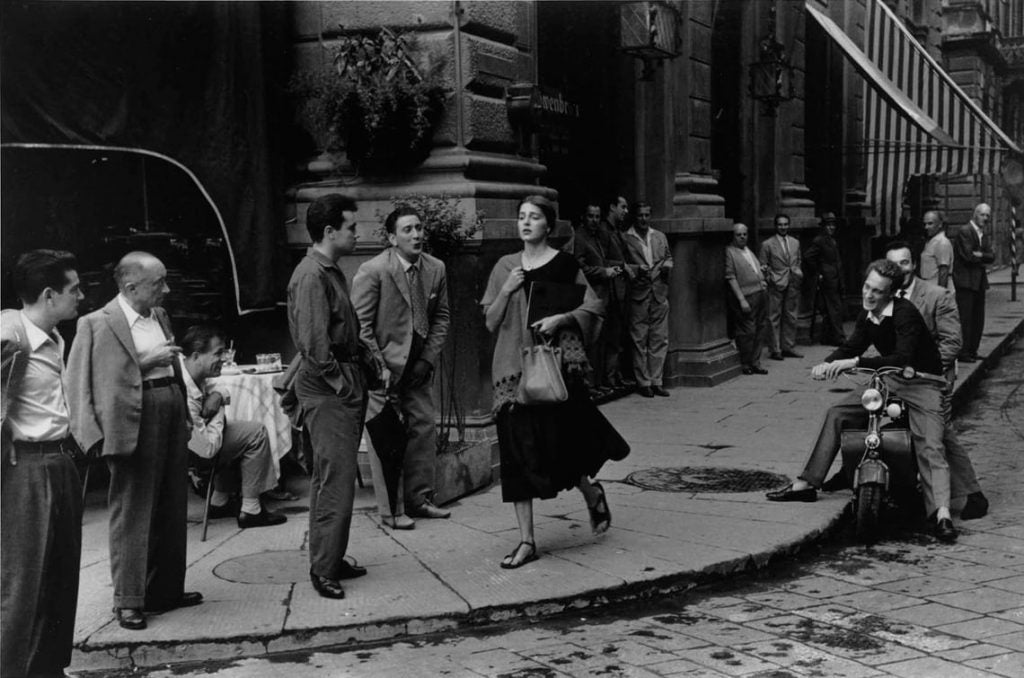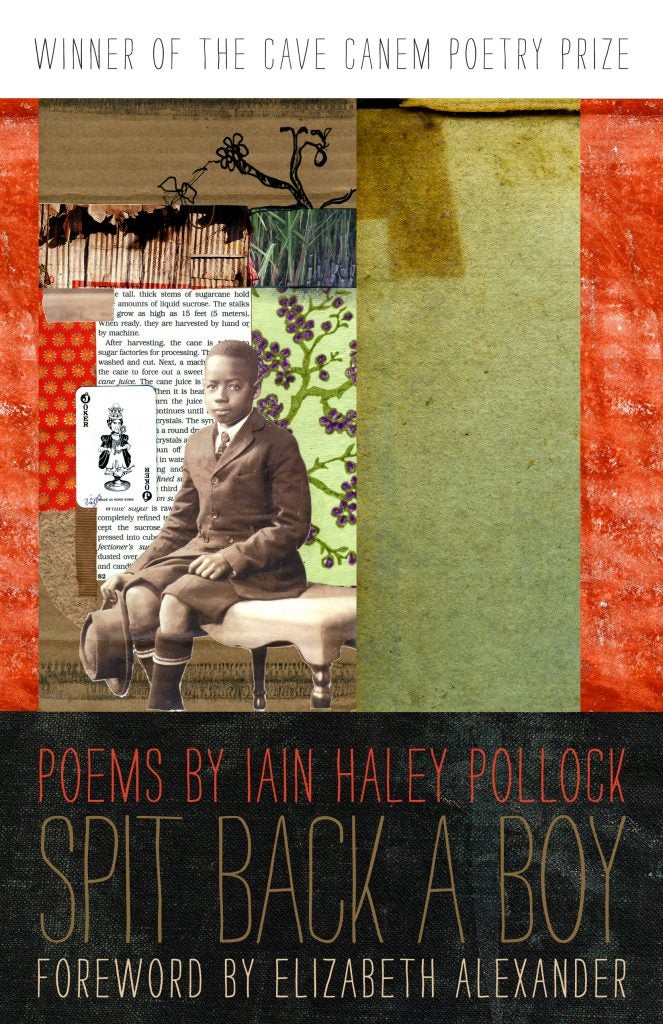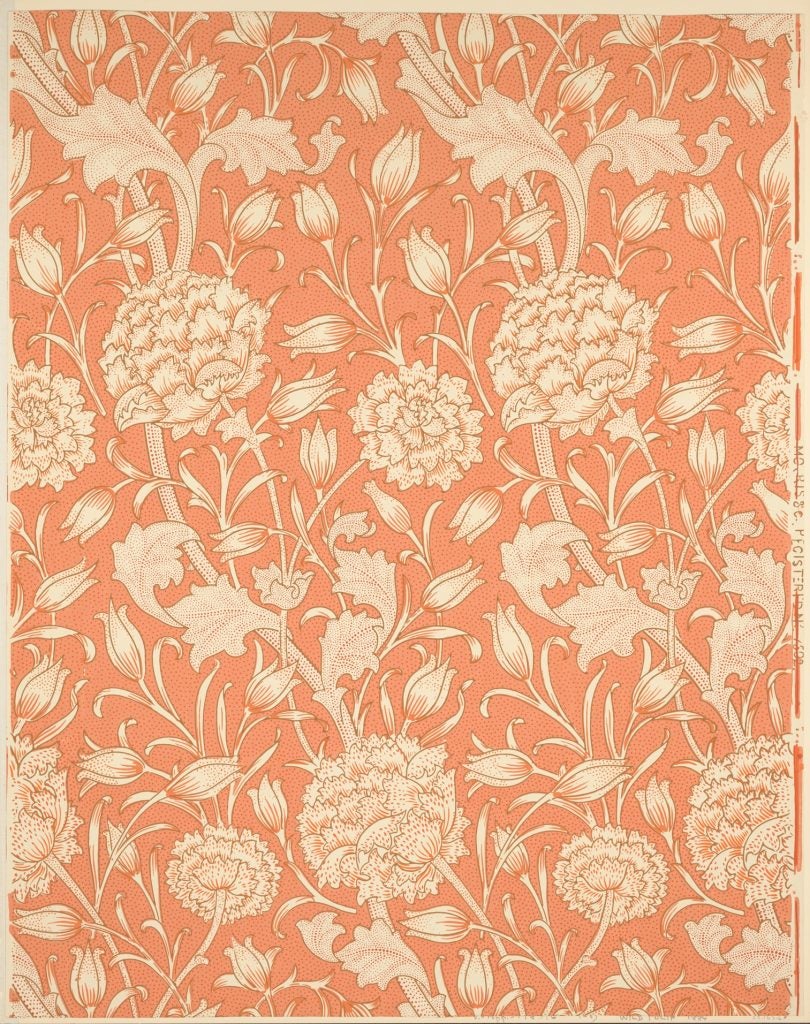To many people, walking seems like such a trivial activity. It is often deemed a “slow” type of transportation, a light form of exercise, or dare I say an inconvenience? Lauren Elkin begs to differ. She has dedicated herself to studying how modern people, especially women, take walking city streets freely and unsupervised for granted.

Elkin is a writer, translator, professor, traveler, and urban wanderer. Her body of work includes a published novel, Floating Cities/Une Année à Venise; a number of essays and reviews touching on topics such as women’s writing, experimental poetics, life-writing, studies of place, and visual culture; a collaborative book about the Oulipo movement; and her latest book, the nonfiction title Flâneuse: Women Walk the City in Paris, New York, Tokyo, Venice, and London (Farrar, Straus and Giroux, February 2017).
Flâneuse elaborates on Elkin’s interest in women’s experiences and on her lifelong passion for flâneurie, the art of knowing a city through attentive urban wandering. She studies various female examples — Virginia Woolf, George Sand, Jean Rhys, Sophie Calle, and Agnès Varda, to name a few — in order to put pressure on the outdated label of this practice as “a man’s work.” She explores the liberating and creative potential for women to walk freely through the streets, as well as what it means to walk under the always watchful male eye.
As a writer who does her best thinking while wandering aimlessly outside, I was naturally drawn to Flâneuse and the way it transports the reader into the past footpaths of iconic female thinkers and innovators of the past hundred years. She made me reevaluate the way I’m making my own work and the way in which I engage with my own city. After reading the book, I found that I walked the streets of my own city with more assertion, attentiveness, curiosity, and purpose. Flâneuse is a book which creates a space for modern readers to hear the stories of their intellectual sisterhood, to feel inspired to resist the opposition and naysayers, and to feel empowered to make true and honest art.
I’m grateful Elkin had time to be interviewed for MQR. She discusses Flâneuse and more in our conversation below.
First of all, in your own words, how would you define what a flâneuse is?
Basically, it’s the female conjugation of the word flâneur, which refers to a man who walks idly around a city, taking in the urban spectacle. A flâneuse is a woman who walks in the city as well. But it’s not as straightforward a thing to do for a woman as it is for a man; we aren’t afforded the same kind of invisibility, and for a long time we weren’t even permitted out onto the street without a chaperone. So there’s something subversive in the act of being a flâneuse; it’s associated with claiming space and the right to the city.
In my book, I look at different ways in which creative women like Virginia Woolf, George Sand, or Martha Gellhorn have done that, whether it was by walking the streets of Madrid to find out how the Spanish Civil War was affecting people’s everyday lives, or conceiving the walker in the city as androgynous, or dressing like a boy to achieve that androgyny.
Your book is one part memoir, one part cultural analysis of female urban writers in the city. Did your project always include these two parts, or did the content change during the writing of it?
Originally it was meant to be a more conventional work of non-fiction: an introduction with a literature review laying out the basic ideas, and then a series of chapters focused on various women who tested or challenged the idea of the flâneur or the flâneuse.  But with one of the women I was writing about, Jean Rhys, it felt really important to write about the way I read her as a flâneuse, and the circumstances within which I came to her writing, which explain why it resonated with me, and really situates my reading of her within the context of being in university and walking in Paris for the first time.
But with one of the women I was writing about, Jean Rhys, it felt really important to write about the way I read her as a flâneuse, and the circumstances within which I came to her writing, which explain why it resonated with me, and really situates my reading of her within the context of being in university and walking in Paris for the first time.
My editor read that chapter and said, “this should be the blueprint for the entire book.” She suggested I braid together my own experiences walking in cities with those of the women I was writing about. That meant I could only write about cities I’d lived and walked in, and women I could identify with. So I had to cut a chapter about Nella Larsen, and one about the modern girls in Tokyo in the 1920s. I do feel like it’s a limitation in some ways, but in other ways it was a big help to the tone and arc of the book. I think the most engaging sections are where the memoir comes together with the literary criticism, and I like that it’s driven now by my attempt to come to terms with my decision to leave New York, and how that changed my relationship to my hometown. It challenges the idea of identity and notions of “belonging” which are often used to alienate people and justify all manners of violence.
Have you noticed any changes in yourself from writing this book? Especially regarding how you walk around cities?
For sure, I’m a more attentive walker now that I’ve formalized it this way! I’ve always loved to walk in cities, but now I do it in a more conscious way. I’m noticing things I didn’t before, and making more time to get out and wander.
I read an interview where you stated, “In terms of how I wrote about the flâneuse I didn’t want to be confined by our understanding of what the flâneur is, defining a flâneuse as a secondary figure, a female somehow managing to engage in a male occupation … maybe the figure of the flâneuse is its own thing altogether.” Can you discuss these differences between the female and male occupations?
The figure of the flâneur is so bound up in a certain configuration of gender, class, and leisure; I think of a film by Matthew Lancit on the flâneur which asks everyday people in Paris if they are flâneurs, and this one guy, a street-sweeper, says (and I’m paraphrasing) “that sounds like something for rich people.”
So I definitely wasn’t interested in recuperating the figure of the flâneur, but in proposing the flâneuse as a more interesting figure, someone to whom the city isn’t just readily available, or given, someone who has to fight for it, for her place in it. The politics of visibility in urban space are immensely complex and intersectional; we’re all out there navigating the streets as best we can, and hoping to get something out of it. The flâneur, for me, is a figure of unexamined privilege. The flâneuse knows what she’s up against and sets out anyway. So I’d like to think flâneuserie is something that can be practiced no matter what your gender …
Your tone in the Tokyo chapter is starkly different from the rest of your book, mostly in that you reveal an honest negativity, doubt, and insecurity to your readers. Walking around Tokyo is much different than walking around New York and Paris, and you aren’t sure how to navigate this foreign territory. Why did you choose to include this section in your book?
That’s funny, I hadn’t realized that. But it’s true that I went to Tokyo with certain expectations about what made a great city, and they shattered my first week there. It was very difficult to walk there, given where me and my ex were living, in Roppongi; it took a long time and a lot of experimenting to find places that weren’t criss-crossed with concrete fly-overs and multi-lane highways. By the time I left, though, I fully realized that I was the problem (what with my Eurocentric ideas about urban beauty) and I came to possess a fierce love for Tokyo. I included this section in the book because it was a place that put the idea of flâneuserie under pressure, challenged it, made it difficult, and made me call everything I thought about the joys of urban walking into question. I haven’t been to Japan since 2009 but I’m dying to go back.
In Flâneuse, you talk about the struggles of receiving your French citizenship. You now live in Paris full-time. What has been your experience as an American ex-pat in France, and what is it like to be a female walker there?
It’s the best place on earth to wander the streets; after all, the flâneur was born in Paris! However, being a female walker here is not always ideal. I definitely receive a good amount of unwanted attention, sometimes harmless and sometimes threatening and invasive. I would love it if there were some kind of quota, like I’ve been groped five times in my life and now I’m done, but I’m sure it will happen again and I never know quite what to do. Still, most of the time nothing happens and I’m free to come and go mostly anywhere I’d want to go. There are certain streets or cafés or areas I wouldn’t wander into — not because I’d be unsafe but because mostly men hang out there and a woman in their midst would feel pretty uncomfortable. There was a whole polemic earlier this year about the neighborhood around La Chapelle; it became a bit of a “no-go zone” for women — they didn’t feel menaced, just uncomfortable — and some women who lived there started a petition to draw attention to this.
You obviously have major respect for the flâneuses featured in your book: Virginia Woolf, Jean Rhys, George Sand, Martha Gellhorn, Agnès Varda, etc. Are there any other women, whom you were unable to add into this book, who inspire you?
There is a section in the introduction where I list all the flâneuses I’d liked to have given a chapter each, but I let myself be convinced to move the list to a footnote. So here it is, my favorite footnote:
I counter Guy Debord with his ex-wife, Michèle Bernstein. I counter Iain Sinclair with Rachel Lichtenstein, Will Self with Laura Oldfield Ford, Nick Papadimitriou with Rebecca Solnit, Teju Cole with Joanna Kavenna, but also with Patti Smith, Adrian Piper, Lisa Robertson, Faïza Guène, Janet Cardiff, Yoko Ono, Laurie Anderson, Vivian Gornick, Lavinia Greenlaw, Amina Cain, Chloe Aridjis, Atiya Fayzee, Heather Hartley, Wendy MacNaughton, Danielle Dutton, Germaine Krull, Valeria Luiselli, Alexandra Horowitz, Jessie Fauset, Virginie Despentes, Kate Zambreno, Joanna Walsh, Eliza Gregory, Annie Ernaux, Annett Groeschner, Sandra Cisneros, Halide Adivar, Oriane Zérah, Cécile Wajsbrot, Helen Scalway, Ilse Bing, Fran Lebowitz, Rachel Whiteread, Banu Qudsia, Zadie Smith, Colette, Emily Hahn, Marianne Breslauer, Gwendolyn Brooks, Berenice Abbott, Laure Albin-Guillot, Zora Neale Hurston,Vivian Maier, Lola Ridge, Nella Larsen, Flora Tristan, and on, and on, and on.
I can tell that so much research went into the making of this book: from philosophy and psychology to quotes pulled from literary texts to film analysis to the in-depth biographies of your featured women. What was your process to get through all of that information? How did you consolidate your research?
I make a document for each project which I call “notes for … ” and then as I go along — say I’m working on the Woolf chapter but come across something interesting for the Gellhorn chapter — I make a note in that document. Then when it’s time to write that chapter, I do my best to make sense of everything I find there. It’s a horrifying few days — or even longer — that I spend trying to find the shape of something in the research. But I can’t seem to work any other way!
Time plays an important role in your book, along with location. As you showcase each woman’s life story, we inhabit their world and its politics, its environments, its social constructions. The book’s epilogue presents a photograph of a woman walking down a street in Florence, surrounded by fourteen men ogling her. You leave us wondering if this is mid-century street harassment or a woman simply enjoying a walk through the city. In the months proceeding the massive Womens’ March on Washington, women are still very much fighting to eliminate objectification, to break glass ceilings, and find the respect they deserve. In your eyes, what will “city walking” for women look like in the near future?
What I was trying to foreground in that section is how little we can know about a woman and her experience merely by looking at her. That photograph is interesting because it seems so clearly to be a case of street harassment, but according to her, years later, she was having a perfectly marvelous time, playing with codes of behavior and fashion. I think we can fall into a trap of thinking women need to be protected in public spaces. Rebecca Solnit writes about this in her chapter on women walkers in Wanderlust, how when she moved to this one neighborhood in San Francisco all her friends told her she couldn’t walk there alone at night.
I think on the contrary, the onus is on men — because it’s far more likely to be a man giving a woman trouble on the street than another woman — to stop trying to make themselves feel more powerful by intimidating women on the street. I think the only way we can ensure that in the future is by refusing to shut up, by raising awareness and talking about the problem. What I tried to do in this book is not go straight to the street harassment conversation — though I do of course acknowledge it in this epilogue you’re referring to — and talk instead about what women have been doing out on the street, apart from being prostitutes or being harassed or threatened, which are the only things you tended to hear people bring up in the media for a really long time.
How does safety play a part into your view of women’s walking?
Of course it’s of the utmost importance, but it’s outside my remit to tell women how to be safe on the street. Martha Gellhorn went walking through the streets of Madrid while shells were falling around her — but I’m definitely not advocating that.
Do you think anyone can be a flâneuse or is there a certain personality that lends itself to being an “urban wanderer?”
I think a native curiosity about the world is necessary, and a critical turn of mind.
What advice would you tell women who want to start Flâneuse-ing?
Just get out into the world. Start noticing. Think about what you see, and where you and other women fit into it.
Do you have any places on your travel list you’d like to flâneuse in next?
So many places! Pretty far up on my list: Copenhagen, Tbilisi, Mexico City, Buenos Aires, Havana, Shanghai, and Osaka.
Image: “American Girl in Italy,” by Ruth Orkin, 1951.






